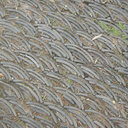Vietnamese
Albanian
Arabic
Armenian
Azerbaijani
Belarusian
Bengali
Bosnian
Catalan
Czech
Danish
Deutsch
Dutch
English
Estonian
Finnish
Français
Greek
Haitian Creole
Hebrew
Hindi
Hungarian
Icelandic
Indonesian
Irish
Italian
Japanese
Korean
Latvian
Lithuanian
Macedonian
Mongolian
Norwegian
Persian
Polish
Portuguese
Romanian
Russian
Serbian
Slovak
Slovenian
Spanish
Swahili
Swedish
Turkish
Ukrainian
Vietnamese
Български
中文(简体)
中文(繁體)
Journal of Ethnopharmacology 2019-Dec
Chỉ người dùng đã đăng ký mới có thể dịch các bài báo
Đăng nhập Đăng ký
Liên kết được lưu vào khay nhớ tạm
Cơ sở dữ liệu đầy đủ nhất về dược liệu được hỗ trợ bởi khoa học
- Hoạt động bằng 55 ngôn ngữ
- Phương pháp chữa bệnh bằng thảo dược được hỗ trợ bởi khoa học
- Nhận dạng các loại thảo mộc bằng hình ảnh
- Bản đồ GPS tương tác - gắn thẻ các loại thảo mộc vào vị trí (sắp ra mắt)
- Đọc các ấn phẩm khoa học liên quan đến tìm kiếm của bạn
- Tìm kiếm dược liệu theo tác dụng của chúng
- Sắp xếp sở thích của bạn và cập nhật các nghiên cứu tin tức, thử nghiệm lâm sàng và bằng sáng chế
Nhập một triệu chứng hoặc một căn bệnh và đọc về các loại thảo mộc có thể hữu ích, nhập một loại thảo mộc và xem các bệnh và triệu chứng mà nó được sử dụng để chống lại.
* Tất cả thông tin dựa trên nghiên cứu khoa học đã được công bố



